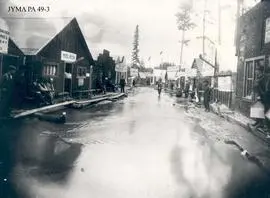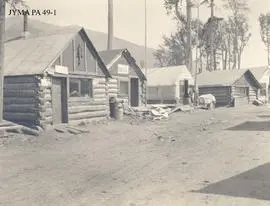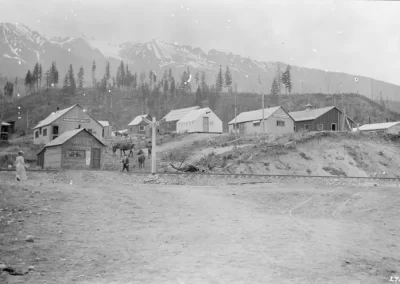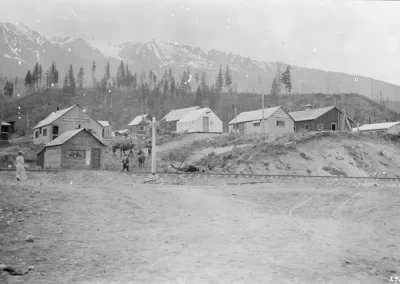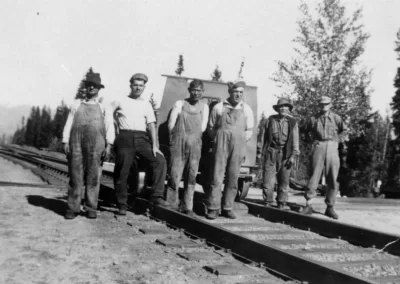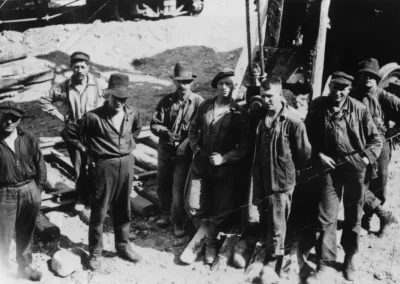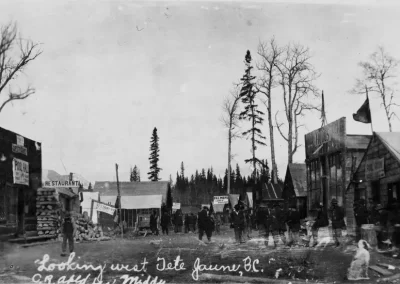Valemount Museum
Tête Jaune Cache
The name “Tête Jaune Cache” originated from an Iroquois Métis nicknamed Tête Jaune (Yellowhead) because of his light colored hair. He kept a stash of furs at Grand Forks, the meeting of the Robson and Fraser Rivers. Soon the area became known to trappers as Tête Jaune’s cache. The name migrated downriver to a periodic settlement of Secwepemc First Nations people, and further downstream to the railway construction town.
What is now a ghost town was once a thriving metropolitan city of around 3,000, much larger than present day Valemount. Between 1911 and 1913 the town of Tête Jaune Cache was the largest settlement west of Winnipeg during railroad construction.
When the end of steel of the Grand Trunk Pacific (GTP) reached Tête Jaune, the town boomed. The buildings were mostly temporary canvas tents, so the town was considered a “rag town” or “tent town.”
Tête Jaune was a pivotal center for transportation between Fort George (Prince George) and Edmonton. By 1913, there were three sternwheelers making runs down the Fraser River carrying supplies and people.
Record high water level was recorded in 1913. The flood eventually washed away the peninsula that the center of Tête Jaune (mile 52) stood on. At mile 53 lived the engineers, superintendents and surveyors. The workers called this snob hill. A forest fire destroyed all the houses on snob hill in 1916, after Tête Jaune had become a deserted ghost town.
Currently the area under the aegis of Tête Jaune Cache is home to a few small businesses specializing in custom timber milling, woodworking, guided flyfishing, whitewater rafting, snowcat skiing, and bed and breakfast accommodation.
Interested in a booklet on the history of Tête Jaune Cache? We have some available for purchase online here, or in the Museum’s gift shop.

